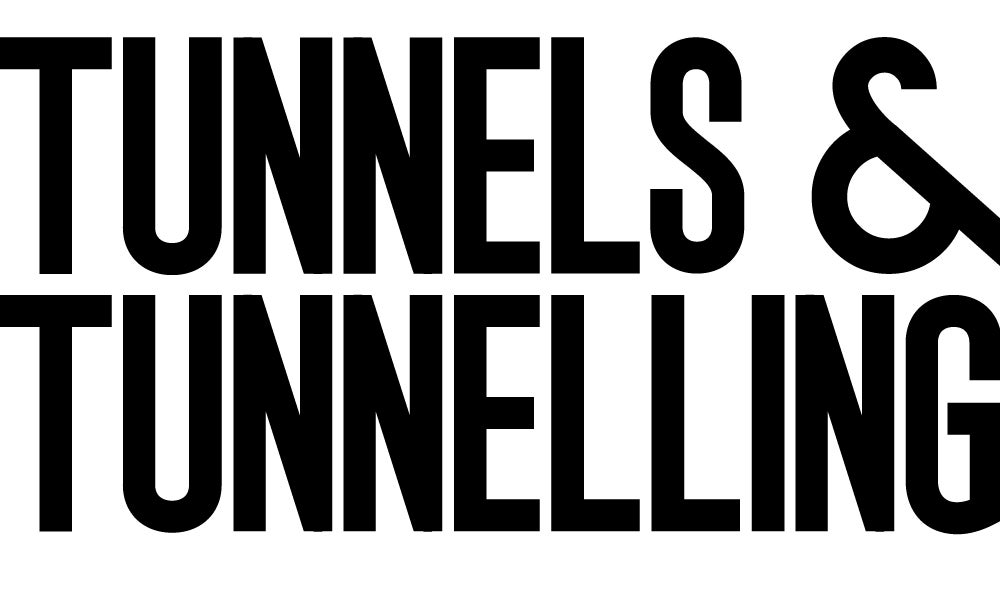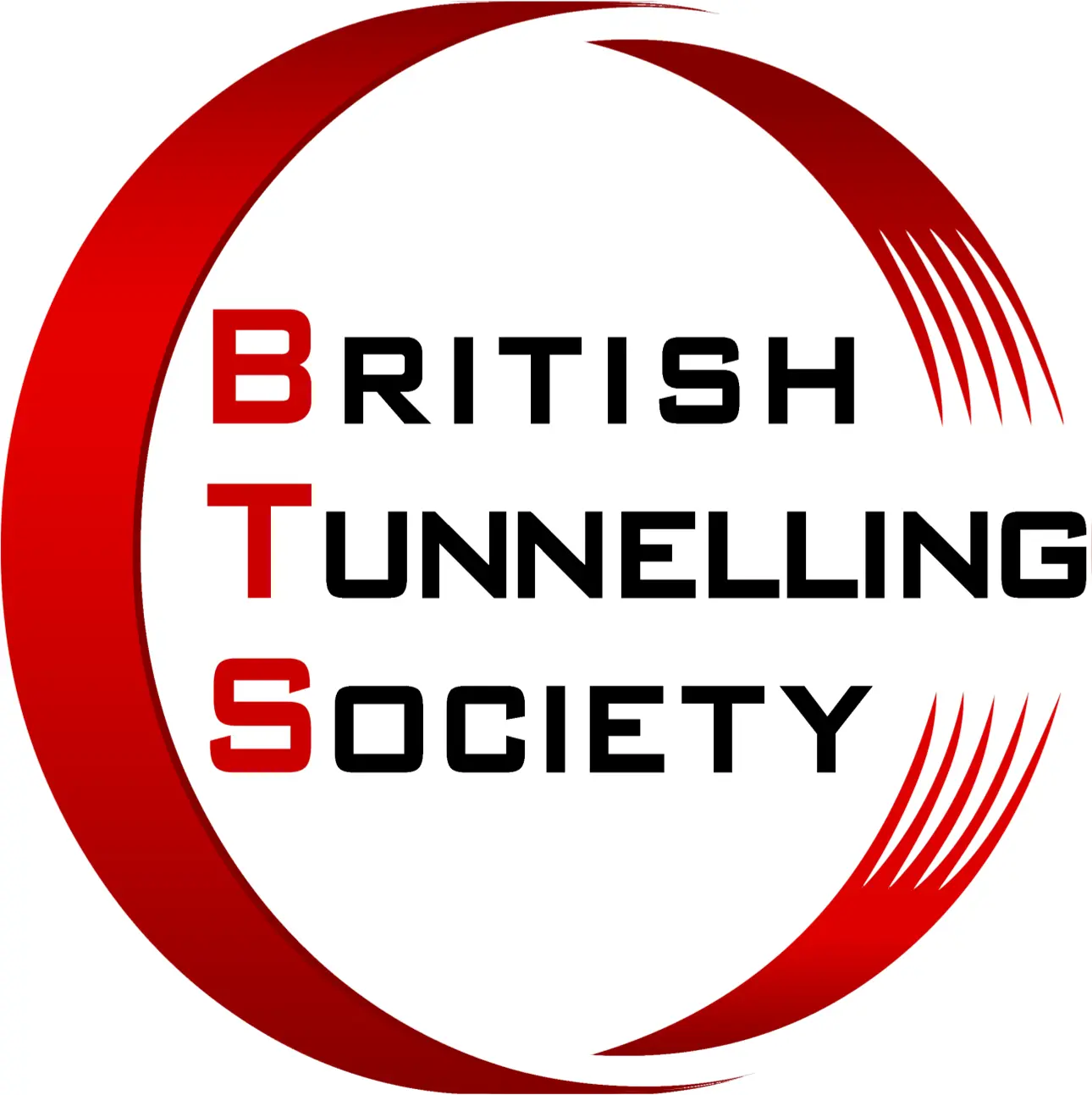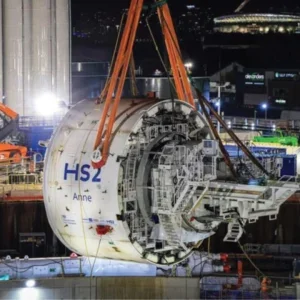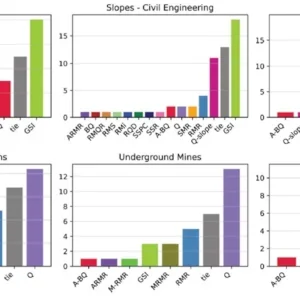Today’s ever increasing traffic volumes have resulted in the need to widen many existing roads, motorways and railways. Meeting these needs while retaining route operation is easy enough for surface networks where lateral space can be relatively easily come by. However for road and rail sections in tunnel, obvious complications must be overcome to undertake construction without closing the tunnel route.
For a tunnel widening technique to work whilst keeping the structure operable, it must solve at least two problems satisfactorily: firstly, user safety must be ensured and inconvenience minimised whilst performing the works; and secondly, the technique must be adaptable to any ground and stress-strain conditions, minimising the effects on the ground surrounding the tunnel.
Clearly a specific construction approach is required that allows ground improvements prior to excavation, as well as final lining placement very close to the face being widened. This is vital to control any effect on the probable band of already plasticised ground around the existing tunnel, which must not be subject to further disturbance. Also, it must be capable of widening the tunnel cross section without triggering deformation in the ground which could place huge thrusts on the lining of the final widened tunnel and excessive differential settlements at the surface. Finally the approach must ensure, at the design stage, that construction schedules can be observed independently of the type of ground and stress-strain conditions to minimise probable lane changes for traffic and inconvenience for users.
Where the idea originated
A new concept is currently being used to widen Italy’s Nazzano road tunnel. The idea originally took shape during construction of the 21.5m wide x 16m high, ‘Baldo degli Ubaldi’ underground station in Rome. The large dimensions and severe constraints imposed on surface subsidence required the use of an innovative construction method (Figure 1).
Construction began by reinforcing the ground ahead of the station tunnel’s two 5m wide x 9m high side drifts with glass fibre rods, followed by the drift’s excavation from two access shafts. The drifts, which would later house the sidewalls of the station tunnel, were then lined with fibre-reinforced shotcrete and steel ribs. Next, the 21.5m wide x 8.5m high, 125m² cross section of the station tunnel crown was excavated, after first having been reinforced by more glass fibre rods. The crown area was protected by a strong shell, created using the pre-cutting method, and then immediately lined with an ‘active arch’ of prefabricated concrete segments. Finally the remaining 90m2 station tunnel cross section was excavated downwards with the invert immediately re-cast in steps after the construction of the crown. The area was then ready for construction of the station infrastructure.
A unique machine was specifically designed and constructed jointly with STAC SpA of Mozzate (Como) to combine the required technologies into the single system needed to carry out construction. It consisted of a large metal arch, with the same geometry as the profile of the crown of the station tunnel, which rested on the inside of the sidewall tunnels with stabilisers positioned on its side to enable it to travel backwards and forwards. The arch not only contained the precutting equipment but also housed the required machinery to place the final lining of prefabricated concrete segments.
Once the machine was in operation, the author noticed that the bench of the station tunnel, with a cross section of similar size to that of a standard motorway or rail tunnel, was not used for any construction operations. Such construction could therefore be performed in the same way on the extrados of an existing tunnel, to widen it, without having to close it to traffic, as long as appropriate measures were taken to protect tunnel users.
How the widening works
The technique was adapted for tunnel widening and consists of three major steps. During the first two steps a ‘steel traffic protection shell’ is placed inside the profile of the old tunnel and all the machinery works above this. This shell is four times longer than the diameter of the tunnel to be widened. The hollow space between the shell and the existing tunnel lining is filled with soundproofing and impact resistant material.
The first stage involves initial ground improvement operations ahead of the face and may consist of reinforcement in the widening face and/or preconfinement of the cavity, such as: horizontal jet-grouting, mechanical precutting or improvement using valved and injected glass fibre rods around the future widening face. They may be placed in advance or radially, working from inside the existing tunnel but always above the steel traffic protection shell.
After the ground improvement has been performed, work starts on driving the widening face in steps (how large depends on the ground characteristics) between the design cross section of the future tunnel and that of the existing tunnel. This is done by excavating the ground and demolishing the lining of the existing tunnel in steps of 600mm to 1.5m depending on the stress-strain conditions of the material being tunnelled and the size of the prefabricated segments designed for the final lining. If the stress-strain conditions allow, tunnel advance may proceed in steps as long as several lining segment lengths.
The machinery used for excavation is equipped with everything needed for ground improvement operations (drilling rig, mechanical precutter blade, etc.) including one or more cutters and, if necessary powerful shears for cutting steel ribs and steel reinforcement in the lining of the old tunnel to be demolished. A demolishing hammer may be used instead of the cutter.
The second and third stage
The second construction stage involves placing the prefabricated concrete segmental final lining of the widened tunnel. The concrete segments are transported to the face via conveyor belts and forklift trucks positioned on one side of the widened tunnel. Slow setting epoxy resins are then applied to the two sides of the segment about to be placed, and on the front end that will eventually be in contact with the arch of the lining that has already been placed.
An erector then firstly places the lower prefabricated segments on both sides of the tunnel and then the upper segments until the arch is completed with the key segment in the roof.
Mortar is then injected between the extrados of the segments and the wall of the excavation behind it. Finally the pressure jack in the key segment is activated to bring the segments into firm contact with each other, thus immediately producing the confinement pressures required on the ground around the tunnel according to the ‘active arch’ principle.
If the new tunnel section requires a foundation structure, or invert, all traffic is diverted from the area to be constructed and the lining of the new widened tunnel is simply joined to the invert of the old tunnel. If necessary a new tunnel invert can then be cast.
Traffic in road tunnels can always be kept flowing in at least one lane in each direction by appropriate organisation of the works needed to construct the foundations and to widen the road itself.
In practice at the Nazzano tunnel
The new technology is currently being applied for the first time, by contractor Cossi Construzioni, to widen the 337m long Nazzano tunnel, on the A1 Rome-Naples motorway, from 12.2m wide x 7m high to 19.7m wide x 11.9m high. The US$31M project started at the beginning of this year and is expected to take approximately 12 months to complete.
From a geological viewpoint, the tunnel runs at a 45m depth through sandy and silty-clayey ground of the Plio-Pleistocene series. Given the type of ground, the design specifies the creation of a shell of fibre-reinforced shotcrete around the 19.7m span of the future tunnel using mechanical precutting followed by ground improvement (Figure 2). This has to be completed before actual widening begins. The ground is then excavated and the old tunnel demolished in steps under the protection of the improved ground until the design profile of the widened tunnel is reached. This is followed 4m–5m behind the face by the immediate placing an arch of prefabricated concrete segments using the ‘active arch’ principle and construction of the tunnel invert.
The steel traffic protection shell in this case has been designed to a length of 60m, and extends for a length of approximately 40m ahead of the widening face. It consists of a modular steel structure and is equipped with runner guides, anchors, motors, sound proof and impact resistant panels to absorb the impact of falling blocks of material during excavation and demolition of the existing tunnel. When tunnel widening advances to the point where the distance between the face and the front end of the shell reaches what is considered the minimum safety limit for vehicle traffic, the shell is moved forward and the various stages repeated in cycles until the whole tunnel has been widened.
Conclusions
The technique solves the specific problem of widening a road, motorway or rail tunnel while allowing traffic to continue to flow during construction work. Its main features include the adoption of a segmental final lining to stabilise the widened tunnel placed in short steps according to the ‘active arch principle’, which comes into operation at a very short distance from the widening face (4m-5m max).
As a consequence passive stabilisation operations such as shotcrete and steel ribs are avoided. The final lining can be put under pressure using jacks in the key segment designed to recentre unsymmetrical loads should there be bending moments sufficient to make partial the resisting section of the arch of prefabricated segments.
Ground improvement can be carried out ahead of the face, if required, to contain or even completely eliminate deformation of the face and of the cavity and therefore avoid the uncontrolled loosening of the rock mass and thereby ensure operational safety. The intense mechanisation of the various construction stages assist advance rates, estimated at 1m-1.5m of finished tunnel per day, and shorter construction times. This is advantageous to site economics, as well as the versatility of the machine, which can operate in varied ground and stress-strain conditions.
Last but not least is the ability to perform all construction operations above a steel shell, under which traffic can continue to flow in safety.
Related Files
Figure1 – The construction sequence of the Baldo degli Ubaldi Station from Phase 1a to Phase 3 (top three sections)
Figure 2 – Nazzano construction sequence






